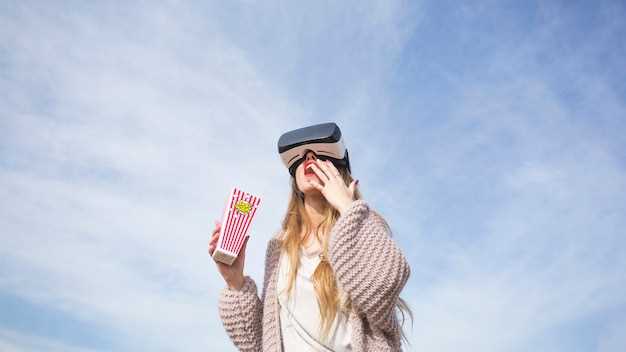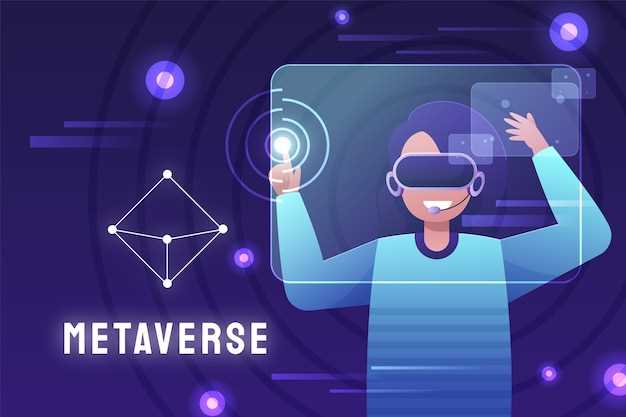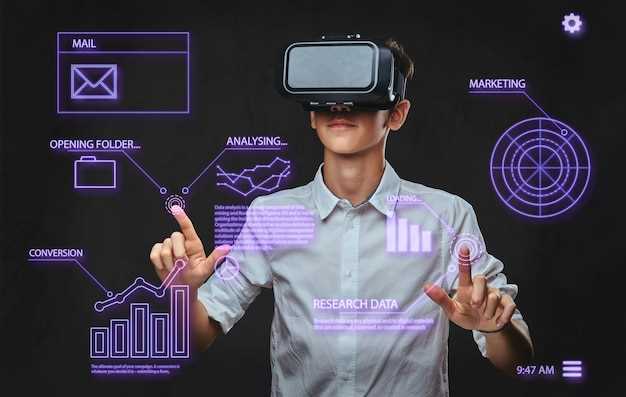The future of digital interaction is here. Technology has leaped forward, blending the virtual and physical worlds in remarkable ways. Imagine opening your eyes to a mix of digital enhancements seamlessly integrated into your real-life surroundings. It’s no longer a distant concept. We’ve already begun to see the seeds sprout.
Virtual and augmented reality open up new opportunities for online casinos. BetorSpin gives players the opportunity to immerse themselves in the atmosphere of a real casino while staying at home. Thanks to virtual reality (VR) and augmented reality (AR) technologies, it is possible to create three-dimensional gambling games and even interact with other players in virtual space. This makes the game more realistic and exciting.
In the coming year, we will witness unparalleled advancements. These innovations are set to transform industries like healthcare, education, and entertainment. Even mundane tasks will be enriched. Visualize learning anatomy through fully immersive 3D models or repairing machinery with digital blueprints overlaid on the real equipment. The possibilities are endless, and the barriers are down. The lines between digital and physical realms have blurred, leading us into an era where these dual realities coexist harmoniously and intuitively.
Integration into everyday life is becoming more seamless. Imagine shopping experiences where digital clothing fits to your virtual avatar, without stepping into a changing room. Workspaces, too, will undergo a revolution. Picture collaborative projects where team members, regardless of their location, can interact with shared holographic interfaces. All this is becoming a reality, as the boundaries of what’s possible continue to expand. This year is set to redefine our interaction with the digital landscape, making it a part of our natural environment.
Revolutionizing Industries with Augmented Reality
Innovative visual technologies are transforming traditional business landscapes. Numerous sectors are adopting these tools, creating new possibilities and efficiencies. From healthcare to manufacturing, these changes are profound. Visual enhancements are not just improving processes. They’re redefining them. The impact is vast and far-reaching.
In the medical field, enhanced visuals are enhancing diagnostics and treatment. For doctors, it means more precise surgeries. For patients, better outcomes. Digital data overlays help visualise complex anatomy. Surgeons can practice on virtual models before the actual procedure. This leads to fewer mistakes and faster recovery.
- More accurate diagnostics
- Improved surgical precision
- Enhanced patient outcomes
Manufacturing is another sector experiencing a huge shift. Assembly lines are becoming more efficient. Workers use smart glasses for real-time instructions. This reduces errors significantly. Maintenance and troubleshooting have become more straightforward. Machines can be fixed quickly, minimizing downtime. The overall productivity boost is undeniable.
- Efficient assembly processes
- Real-time guidance for workers
- Speedier maintenance and troubleshooting
Retail is benefiting immensely as well. Shoppers can now see products in a new way. Virtual fitting rooms allow customers to try on clothes without the hassle. Furniture can be visualized in homes before purchase. This leads to informed decisions. Customer satisfaction is improving along with sales.
- Virtual fitting rooms
- In-home product visualization
- Higher customer satisfaction
The entertainment industry has embraced these advancements with enthusiasm. Gaming was one of the first adopters. Players are now experiencing immersive adventures. Museums are also leveraging this innovation. Visitors engage with interactive exhibits, learning history in an exciting manner. Movies and concerts offer enhanced experiences, keeping audiences captivated.
- Immersive gaming experiences
- Interactive museum exhibits
- Upgraded movie and concert experiences
In education, the impact cannot be overstated. Students can explore complex subjects visually. Concepts in science and history come to life. Learning is now engaging and interactive. Teachers can explain difficult topics more effectively. The potential for global educational transformation is enormous.
- Engaging learning tools
- Interactive science and history lessons
- Enhanced teaching methods
In essence, the unique visual technology is creating a seismic shift. Industries are evolving at an unprecedented pace. From healthcare to entertainment, the benefits are clear. This transformation is just beginning. The future holds even greater potential as new uses are discovered and technology continues to advance.
Transforming Healthcare with AR
Technology is reshaping medicine. Interactive visuals are aiding both patients and doctors. Medical training is quickly evolving. Procedures are becoming safer. Treatment plans are getting more personalized. The health sector is experiencing a transformative change, largely driven by these new tools in the hands of healthcare professionals, promising better outcomes through enhanced precision and understanding.
Medical students can now practice complex surgeries using interactive overlays. This change in training methods reduces risks. Real-world experience is valuable, but simulated environments offer safe practice. Mistakes can be corrected instantly, providing crucial learning moments. Moreover, these experiences cannot be matched by traditional textbooks.
Surgeons can now see a patient’s anatomy overlaid on their actual body during operations. This means fewer errors. It also means faster procedures. Patients benefit directly. Enhanced precision leads to quicker recovery times, less pain, and fewer complications. This leap in surgical assistance showcases the potential for groundbreaking advancements in the future.
Patient education is also reaching new heights. Instead of solely relying on verbal explanations, doctors can visually demonstrate medical conditions. Complex diagnoses are easier to understand. This empowers patients. Empowered patients make better decisions regarding their health. Informed choices lead to improved well-being and satisfaction.
Rehabilitation becomes engaging and effective with the help of dynamic visuals. Recovery routines can be monitored and adjusted instantly. Patients receive real-time feedback. Motivation is maintained. Staying committed to recovery plans becomes easier. This tech-driven approach optimizes therapy and enhances outcomes.
The integration of these tools in medicine heralds a promising future. As this technology develops, we can expect even more incredible innovations. Accuracy and efficiency in healthcare will keep improving, ultimately saving more lives and making treatment more effective than ever before.
Enhanced Surgical Procedures

The medical field is constantly evolving. New technology is revolutionizing surgical operations. The innovations offer unprecedented precision and safety. Surgeons now have tools that were once considered science fiction. This translates to efficient and less invasive methods. The impact on patient recovery is significant.
Let’s examine the key benefits:
- Precision:Surgeons gain better accuracy during delicate procedures.
- Training:Medical students can practice complex surgeries in a controlled environment.
- Visualization:Real-time imaging enhances understanding of the surgical area.
- Efficiency:Reduced operation times lead to better outcomes overall.
Accurate tools mean fewer mistakes. When doctors perform complex operations, precision is paramount. Cutting-edge devices assist in navigating tricky anatomies. Complex procedures become more manageable.
Training future surgeons also benefits. Practicing intricate techniques in simulated settings reduces real-world errors. This hands-on experience under safe conditions is invaluable. It fosters confidence and competence. As a result, newly minted surgeons enter operating rooms better prepared.
Another major advantage is visualization. Real-time scans show what’s happening under the skin. Surgical teams make more informed decisions on the spot. This dynamic understanding minimizes complications and surprises.
Efficiency is boosted across the board. With advanced equipment, surgeries take less time. Quicker operations reduce patient strain. The overall healthcare system becomes more responsive and cost-effective. Recovery periods shorten, benefiting everyone involved.
These technological advancements mark a new era in surgery. Safety, precision, and efficiency are the hallmarks. Future medical practices will undoubtedly continue to build on these innovations, further transforming patient care.
Medical Training Innovations

The landscape of medical education is undergoing a significant transformation. New technologies are offering unprecedented opportunities for immersive learning experiences. Students can now perform procedures in simulated environments that mimic real-world scenarios. This shift is crucial for enhancing practical skills and decision-making abilities. No longer are trainees confined to textbooks and mannequins.
One major breakthrough is virtual interaction with human anatomy. It allows for exploration with incredible detail and precision. Trainees can dissect and examine tissues layer by layer. Errors made in this virtual environment lead to invaluable learning moments without patient risk. Procedures can be practiced multiple times, helping build confidence and competence.
Furthermore, these platforms support collaborative learning. Multiple users can participate simultaneously from different locations. It fosters teamwork and communication skills vital in the healthcare setting. Interactive scenarios provide real-time feedback, enhancing the learning curve dramatically. It’s a far cry from traditional surgical labs with limited access and resources.
Sophisticated haptic feedback systems also play a critical role. They replicate the tactile sensations of medical procedures. Trainees feel the resistance of tissue, the pressure needed for suturing, and other physical aspects. This sensory input bridges the gap between theory and practice, making the training more intuitive and effective.
Remote learning tools have also gained prominence. These innovations cater to a global audience, transcending geographical barriers. Courses and modules can be accessed from anywhere, making high-quality medical education more inclusive. This increased accessibility speeds up the training process and ensures consistent, high standards across the board.
In essence, the integration of these advanced tools is revolutionizing medical training. It’s creating a more dynamic, interactive, and efficient pathway to becoming proficient healthcare professionals. The future of medical education looks incredibly promising with these cutting-edge developments at the forefront.
Retail Experiences Elevated
Imagine stepping into a store where your shopping journey is transformed into an interactive adventure. Stores aren’t just for buying items anymore; they are becoming dynamic spaces. Personalization takes center stage. Customers receive tailored recommendations based on their preferences. Visual cues guide shoppers through new collections.
Products come to life with immersive displays. Trying out a pair of sneakers? See them in various colors instantly without needing to search the shelves. It’s not just about viewing; it’s about engaging. Interactive mirrors allow you to try on outfits without stepping into a fitting room. A few taps and voilà, you’re dressed in a new wardrobe.
Stores also harness the power of digital enhancements to provide detailed product information. Holding an item? Instantly see reviews, material breakdowns, and even how-to-use guides. The shopping experience is no longer confined to physical borders. Blending the best of both worlds, digital layers add a dimension that traditional shopping lacks.
Customer service stands to gain a lot from these advancements. Imagine a virtual assistant guiding you, suggesting alternatives, and even completing transactions. Efficiency meets satisfaction. Staff can focus more on personalized advice rather than mundane tasks like stock checks. This frees them to build stronger relationships with customers.
In essence, the entire retail landscape is being redefined. What was once a routine activity is now an exciting experience, blending discovery and convenience. Shoppers don’t just buy products; they embark on curated journeys that resonate with their unique tastes and preferences.
Virtual Product Try-Ons

Imagine being able to try on clothes, shoes, or accessories without stepping into a store. This is the promise of virtual product try-ons. It’s convenient, saves time, and often more engaging. Users can see how items fit and look in real-time.
Enhanced User Experience
Consumers today seek efficiency and convenience. Virtual try-ons bring these traits to shopping. They allow users to visualize products on themselves, leading to informed purchases. This technology also reduces return rates, as buyers are more certain about their choices. Brands are seeing the benefits. Customer satisfaction is higher when expectations meet reality. This leads to repeat business and customer loyalty.
Technology Behind the Scenes
Virtual try-ons use advanced tech to deliver realistic experiences. Programs scan faces, bodies, or surroundings to create accurate overlays. This requires sophisticated algorithms and powerful processors. Moreover, these systems are constantly evolving, becoming faster and more precise. Many apps have integrated this feature, allowing users to interact with products seamlessly. This interactivity is fundamental in modern retail, enriching the shopping journey.
Impact on Various Industries
The fashion industry is a primary benefactor. Online shoppers can now avoid ill-fitting garments. Cosmetics are benefiting too. Users can experiment with makeup styles in a mess-free manner. Furniture and home decor sectors are also joining in. People can visualize items in their own spaces before committing. This cross-industry impact signifies a shift in how we explore and purchase products.
Future Prospects
The development of virtual try-ons shows no signs of slowing down. Companies are investing heavily in making these experiences more intuitive and lifelike. As tech progresses, we might see even more realistic simulations. This could eventually include textures and sensations, enhancing the sensory experience. The potential is vast, reshaping our shopping habits profoundly. Stay prepared for more innovations in this dynamic field!
Interactive Storefront Displays
Imagine walking past a store and suddenly getting drawn in by a dynamic display. These digital windows transform the shopping experience into something magical. They pique curiosity. They engage. They connect. Instead of static mannequins or posters, there’s movement. It’s almost like a conversation with potential customers.
Interactive displaysallow businesses to showcase their products in inventive ways. Users can touch, swipe, and explore without setting foot inside. This immediate engagement increases interest and boosts foot traffic. Merchants can update content seamlessly. Special promotions or new arrivals? Instantly visible to passersby. The interactive element helps brands stand out in a crowded marketplace.
Technology pushes boundaries of what’s possible for storefronts. Instead of merely displaying items, these setups can tell a story. They can educate and entertain. Think of a shoe store that not only shows off its latest sneakers but also offers a mini-tutorial on proper running techniques. Or a cosmetics shop that lets customers virtually “try on” different shades and styles. The possibilities are vast, and the creative potential limitless.
Adopting interactive displays means embracing modern customer engagement methods. Competition for attention is fierce. Enhanced storefronts provide an edge. Shoppers increasingly look for unique experiences. By leveraging these digital displays, businesses create memorable interactions. Such encounters build stronger brand loyalty and repeat customers. In essence, these tech-forward displays are not just a trend but a valuable tool for the future.
Education and Training
More immersive learning techniques are reshaping the educational landscape. Imagine a classroom where historical events come to life. Students don’t just hear about Rome; they walk through its ancient streets. Medical trainees perform virtual surgeries, making errors without real-world consequences.
The impact is profound.Traditional textbooks? They’re changing too. Interactive 3D models replace static images, allowing learners to explore intricate details. Language learners converse with virtual natives, enhancing fluency and cultural understanding. Safe, controlled environments lead to deeper comprehension and better retention.
For corporate training, the advancements are just as impressive. Employees develop skills in lifelike scenarios. From customer service to high-stakes negotiations, they practice and perfect without risk. Sales teams visualize and manipulate products, understanding features and benefits more thoroughly.
It’s not just about knowledge retention, though.Confidence levels soar as individuals repeatedly practice complex tasks. This dynamic approach transforms passive learning into an active, engaging process. It’s a game-changer, breaking traditional barriers and opening new possibilities for educators and trainers worldwide.
Video:
Xreal Ultra + Beam Pro Review: Augmented Reality Android
Xreal Ultra + Beam Pro Review: Augmented Reality Android by Adam Savage’s Tested 95,969 views 1 month ago 20 minutes
Questions and answers:
How has augmented reality technology advanced in 2024 compared to previous years?
In 2024, augmented reality (AR) technology has seen significant improvements in terms of both hardware and software. Advances in processing power and miniaturization have led to more comfortable, lightweight, and affordable AR wearables. Additionally, software innovations have resulted in more immersive and interactive experiences. Features like real-time object recognition, enhanced gesture controls, and improved spatial mapping contribute to a more seamless integration of AR into daily life. Enhanced connectivity through 5G also allows for more robust and real-time data transfer, making collaborative and remote work applications much more effective.
What are some practical applications of augmented reality in the healthcare industry in 2024?
In 2024, augmented reality is making substantial contributions to the healthcare industry. Surgeons use AR for enhanced visualization during complex procedures, overlaying critical information like blood flow and tissue structure directly onto the surgical site. AR is also being used for training purposes, allowing medical students to practice surgeries in a risk-free, virtual environment. Additionally, patients benefit from AR through remote consultations, where doctors can perform detailed examinations by interacting with 3D models in real-time. Fitness and rehabilitation programs also leverage AR to guide patients through exercises and therapy, providing visual feedback to ensure proper technique and progress tracking.
Can AR technology be used in education, and if so, how?
Yes, AR technology is revolutionizing the educational sector in 2024. Educators use AR to create immersive learning experiences that engage students more effectively than traditional methods. For example, history lessons come to life as students explore 3D reconstructions of ancient civilizations, and biology classes benefit from interactive models of human anatomy. AR also supports hands-on learning in STEM fields, allowing students to interact with virtual lab equipment and conduct experiments in a safe, controlled environment. Furthermore, AR enables personalized learning, with content tailored to individual student’s needs and progress, increasing engagement and improving outcomes.
What are the primary challenges facing augmented reality adoption in industries by 2024?
Despite its many advancements, augmented reality adoption in various industries faces several challenges in 2024. One of the main issues is the high cost of developing and implementing AR solutions, which can be a barrier for smaller businesses. Additionally, concerns related to privacy and data security are significant, especially as AR applications often require vast amounts of personal and sensitive information. Technical challenges such as ensuring consistent and reliable performance in diverse environments also persist. There is also the need for widespread user education and training to effectively integrate AR technologies into existing workflows. Lastly, social acceptance and the ergonomic design of AR devices remain hurdles that need to be addressed to ensure long-term adoption and comfort for users.